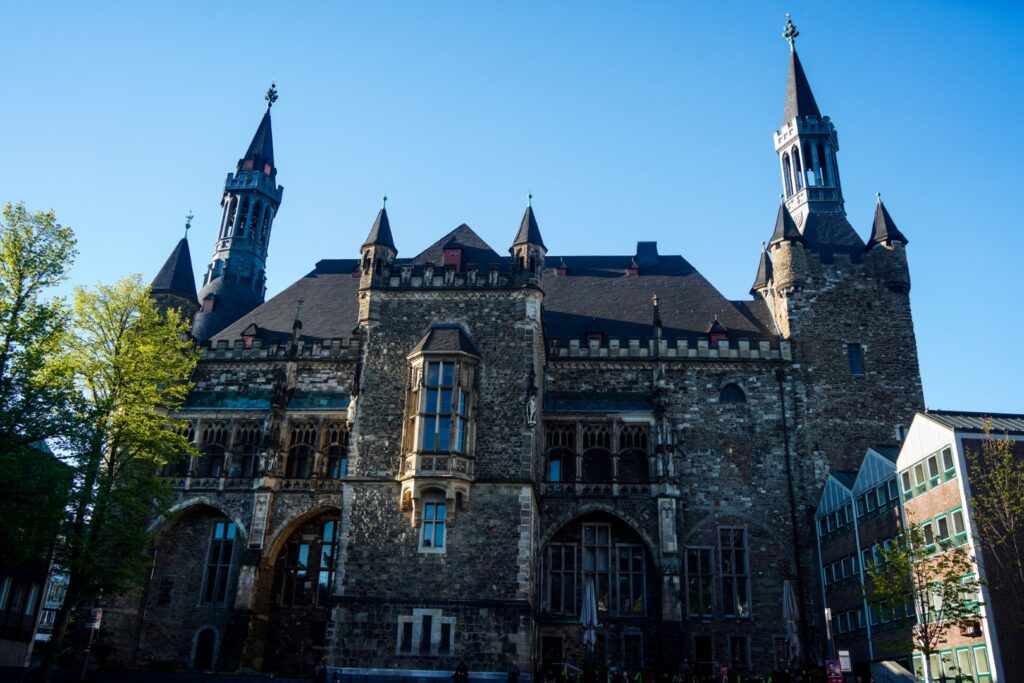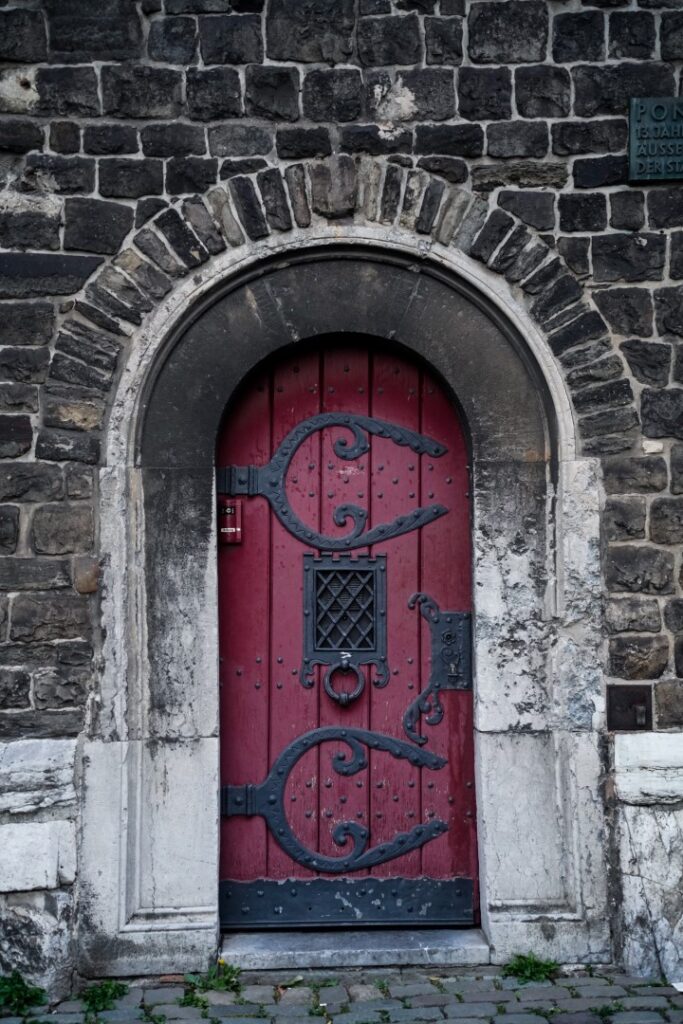This post contains affiliate links. If you make a purchase through these links, I may earn a commission at no extra cost to you. Thank you!
Close to the triborder with Belgium and the Netherlands sits the small German city of Aachen, home to around 250,000 people. Aachen is the westernmost city in Germany, and is famous for having one of the oldest cathedrals in Europe, which is also a UNESCO World Heritage site. After our whirlwind tour of Belgium last Easter, my travel buddy and I spent an evening in Aachen on our way back home. We’d originally planned to spend a whole day in Aachen, but after very spontaneously deciding to add Liège to our itinerary, we ended up with just an evening in the city. Thankfully, Aachen is small and all of its main sights are concentrated in the historic old town around the cathedral. We were already quite tired after spending all day walking around hilly Liège, but we knew we couldn’t miss out on exploring Aachen!
Aachen Cathedral was built at the end of the 8th century and is considered one of the most important Roman Catholic churches in Germany. It was constructed by order of Charlemagne, former Emperor of the Romans, as Aachen was the capital of his empire. He was buried inside the cathedral in 814. For the next 600 years, the German emperors were crowned in the cathedral, but in the early 16th century, following the reformation of Germany, Aachen lost its significance, and crownings were instead undertaken in Frankfurt am Main’s cathedral.
In 1978, Aachen Cathedral became the first place in Gemany to be listed on UNESCO’s list of World Heritage sites, due to its central importance to the history of the Roman Empire and because of its exceptional architecture.
The one disadvantage of visiting Aachen in the evening was that the cathedral was closed, so we didn’t get to see its interior architecture nor Charlemagne’s famous grave. Still, it was nice seeing the cathedral both in daylight and after dusk when it was all lit up!






While the cathedral is the main draw of the city, Aachen’s quaint city centre has plenty more to offer. It may be small, but the streets are bustling with cafés, restaurants, bars, small shops and plenty of beautiful old buildings. The most important of these is the city hall, which dates back to 800 when it was used as Charlemagne’s palace.
The city hall has been largely rebuilt in the Gothic style, and unfortunately, it has suffered damage in several fires and bombings during the Second World War, so most of the building that stands today dates back to the mid-1900s. However, the restoration was beautifully done and the building has maintained its historic look, at least on its exterior.
The narrow streets of the old town are also home to Aachen’s oldest building, the Grashaus from 1267, the remains of a Roman temple and the Haus Löwenstein building from 1344. The furthest we ventured from the city centre was to the edge of the old city borders to see Ponttor, one of the two remaining historic city gates.












After a few hours of exploring Aachen and watching day turn to night, we found a cozy restaurant for our evening meal, and then called it a night. For convenience, we stayed at a&o Hostels which is right next to the train station as we’d be departing early the next morning.
Our visit to Aachen was short and sweet, but as much as I liked the city, I think it was enough time for us. However, I would return if I’m ever in the area again, as I’d love to see the interior of the cathedral!
Fancy a free walking tour of Aachen?
If you would like some more in-depth knowledge about Aachen and see some local secrets in this charming city, make sure to begin your Aachen adventure with this tip-based walking tour with Free Tour Expert!
Leave a Comment